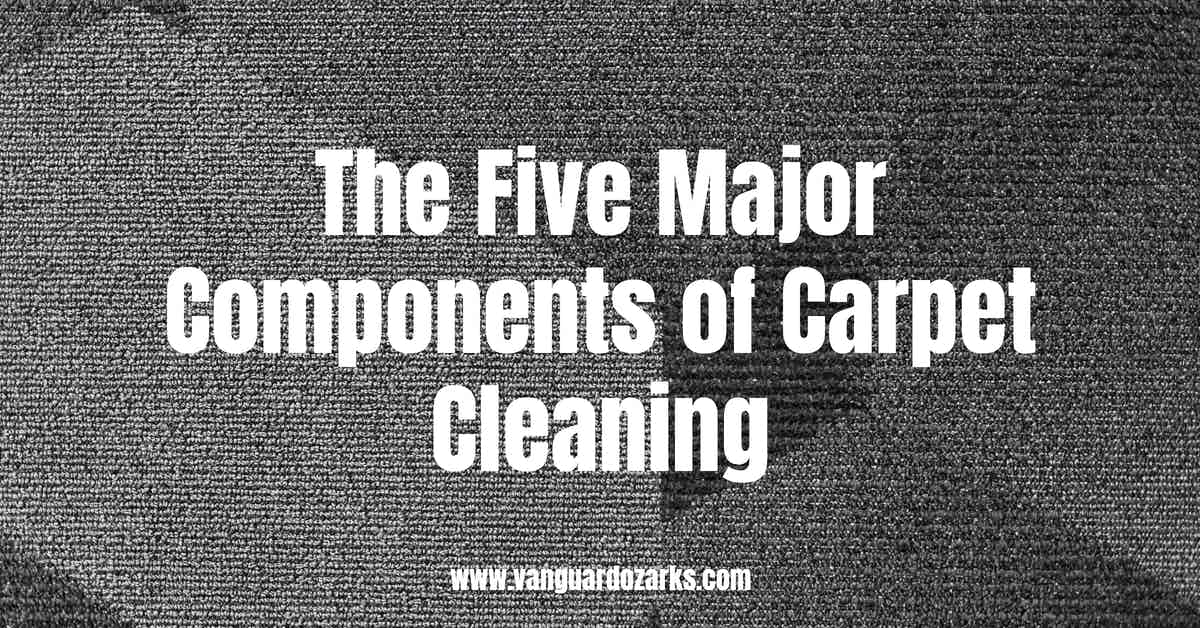Carpet cleaning--fundamental to the appearance of the built environment and the health and wellness of facility occupants--can be broken up into five major components or principles that aid in understanding the science behind the involved processes.

The Purpose and Challenges of Facility Carpeting
Facility carpeting serves several purposes, including:
- Reducing sounds and echoes.
- Improving facility appearance.
- Increasing building insulation.
- Providing cushioning in environments where occupants spend time on the floor, such as daycares.
- Reducing slips and falls when compared to hard floors and concrete, and;
- Trapping and containing soil for easy removal.
According to some estimates, carpets can retain one pound of soil per one square foot of carpeting.
That soil can contain a host of microbes, such as:
- Animal and human skin cells and hair follicles.
- Mold, fungi, certain pathogens, and bacteria.
- Various chemicals, especially road tar.
- Dirt.
- Allergens, including pollen and dust mites, and, depending on the environment;
- Cigarette smoke and residue.
Exposure to these microbes has been linked to numerous health issues, especially among vulnerable demographics that include children, the elderly, and the immuno-compromised, including:
- Respiratory issues, especially asthma and rhinitis.
- Skin irritation, including eczema and athlete's foot.
- Pet diseases.
- Stomach illness, specifically from norovirus, and;
- Mental stress and anguish due to occupying an unclean environment.
According to the American Lung Association;
Carpets may trap pollutants like dust mites, pet dander, cockroach allergens, particle pollution, lead, mold spores, pesticides, dirt and dust.
Toxic gases in the air can stick to small particles that settle into carpets.
These pollutants may become airborne during renovations, vacuuming or even daily activities like walking on the carpet.
In the home, children are more likely to be exposed to pollution in carpets.
They spend time playing on the floor and place their hands in their mouths.
The Five Principles of Carpet Cleaning
Removing the soil that carpeting attacks and traps while addressing the numerous health concerns associated with facility carpeting involves five specific principles of cleaning.
- Dry Soil Removal.
- Soil Suspension.
- Chemical Action.
- Heat, and;
- Agitation.
Dry Soil Removal
Dry soil removal is accomplished with an upright vacuum that is used regularly to remove dirt and other soils from the entryway (commonly), surrounding facility carpeting (routinely), and the edges of the carpet along the walls (as needed).
Dry vacuuming is the most common method employed for routine housekeeping and facility carpet maintenance and should be performed every day a facility is occupied.
Additionally, as with any scientific cleaning process, removing dirt, dry soil, and other matter and obstructions is necessary to ensure the efficacy of the remainder of the carpet cleaning process.
Soil Suspension
Soil suspension uses a combination of chemicals, heat, agitation, and time to separate the soil from the carpet fibers.
Chemical Action
Carpet cleaning chemicals emulsify soil by breaking the chemical bonds between the microbes and the fiber.
The organic material is either suspended for easy removal or rapidly dissolved by the chemical detergent.
Heat/Temperature
High temperatures reduce the surface tension of water, which increases the carpet cleaning process's efficiency compared to cold water by accelerating the molecular activity of the detergents.
Agitation
Carpet fiber agitation is critical for evenly dispersing cleaning chemicals across and down into the pile.
In the absence of proper agitation, soil streaks are commonly left behind after the chemicals are extracted.
The process typically requires a combination of manual agitation with a brush followed by mechanical agitation with either a rotary system, similar to a buffer, or as an attachment on an extractor.
Time
While time is not a specific principle of the carpet cleaning process, it is absolutely mandatory to remove set in soils.
In the course of standardized cleaning and disinfection processes, a dwell time for disinfectants is required to achieve full efficacy.
Similarly, pre-conditioning chemicals must be allowed to soak in, undisturbed, to break up the bonds tying the soil to the carpet fibers, and the floor must be allowed to dry post-treatment to avoid re-soiling.
References & Resources
Takeaway
Carpet cleaning is a critical component of a safe, healthy facility and mandatory for a successful subscription-based cleaning service.
Commercial carpet cleaning involves a scientific process that requires the correct chemicals, tools, and experience on the part of the technicians to avoid property damage and occupant injury.
Outsourcing to an experienced provider is a proven method for onboarding critical carpet and floor care services as part of a greater facility cleaning subscription service at a fraction of the cost of maintaining a similar service in-house.
Contact us today and discover why Vanguard Cleaning Systems® is the Standard of Clean® for businesses throughout Northwest Arkansas, Missouri, and Oklahoma.
In Oklahoma, dial 918-960-4450
In Arkansas, dial 479-717-2410
In Missouri, dial 417-812-9777
